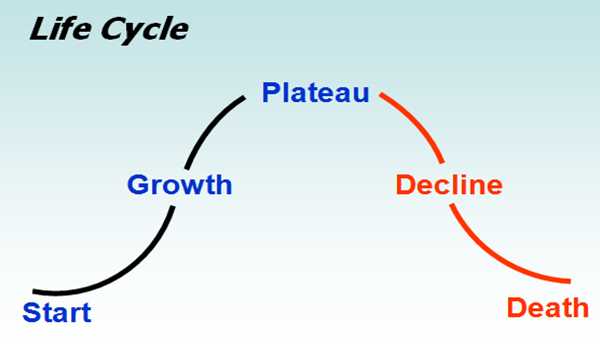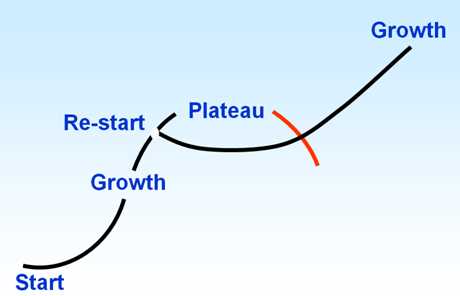
No matter what we do in life we are part of an organisation. All organisations begin when two or more people agree to cooperate to accomplish some shared purpose, dream, or vision. In the beginning there is a high level of energy, enthusiasm, excitement, imagination, confidence, and commitment to a purpose, dream or vision. If this is ever lost, it must either be revived or a new dream created, or the organisation will inevitably die.
It is important to understand that all organisations have life cycles that are fairly predictable and can be expressed in terms of shaped curves (this includes Christian organisations). The curves show how organisations form and start to grow (and hopefully succeed), before eventually reaching a peak and then starting to decline and eventually die. The time span for all of this may be very long or fairly short.
Unfortunately, there is no simple way of calculating exactly how long an organisation will take to reach a peak or when the decline will start. What is critical though is to begin a second wave / curve of development before the organisation reaches its peak. This is a paradox, of course, because we can’t envisage changing something when everything is apparently going so well.
One of the critical roles of leadership is to identify when to change. This takes vision and courage from the leader because when things are going well, there seems to be no reason to change. “We know how to do it now”, so “don’t rock the boat or change the formula”. In the short term the risk involved in changing may appear to be large. “Leaders therefore need to be forward thinking and able to see the “big picture”. Leaders need excellent strategic thinking skills. However, leaders also need to be aware of their own and the organisation’s mindsets which can constrain them from making the hard decisions. Usually what happens is the discission to change is left too late and the change process is attempted when panic has set in. This is less likely to work.

The only way to continue the life of an organisation is to start a second curve. This prescription, however, requires leaders to blend the continuity of the first curve with the invention of the second curve. That, in turn, means finding ways for two very different cultures to live together and to value each other, because each needs the other if either is to survive. The second curve needs the resources of the first to support its experiments, and the first curve needs the second if it is to have any future at all. Sadly, this commonality of interests is not always perceived by either party. “Those Young People are all energy but no experience,” says one party, while the Young People, so-called, mutter about the entrenched attitudes of the Old Guard. Both are right and both are needed.

To start on a second curve it makes sense to concentrate on what you do best and build new pathways which make it easy to:
- concentrate on what continues to produce outcomes that are connected with values
- identify new opportunities arising in these areas
- channel resources and initiatives into these new opportunities
- effectively manage and staff for these opportunities
- encourage innovation and a ‘can do’ approach.



Comment here